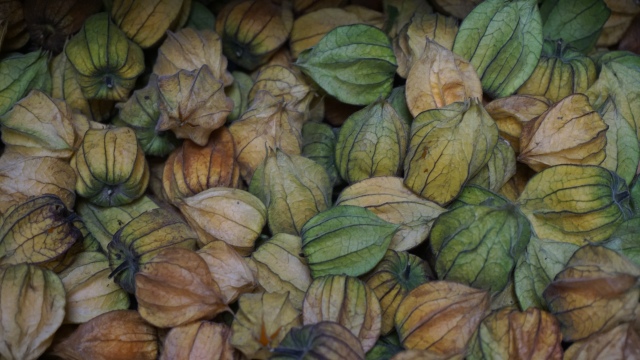Robert and I took a tour of a local fruit market today to taste Colombian fruits. Believe it or not, we tried 15 different fruits. (Although I’m a bit worried given that at least five of the fruits were described as laxatives, but so far so good….). Plus we got to try a different version of an arepa choclo — this one didn’t have any cheese and was cooked in plantain leaves, which gave it a smoky flavor. Plus, we each had a fruit juice at the end. (Oh, and Robert somehow managed to find some sausages too…).

Isn’t the market pretty?
It was actually a phenomenally interesting way to spend a morning. We saw fruits we had never even heard of before. Plus, we learned how to know when they are ripe. And the people of the market were so friendly — randomly coming up to us to say hi, letting us take all the photos we wanted to take, and welcoming us to Colombia. And the smiles when anyone in our group bought something were amazing to see.
I think our favorite was the Uchuva (cape gooseberry) — this was the only thing we bought to bring back to the hotel. They don’t look all that interesting, but when you peel back the leaves and eat the fruit inside, it is like a little bit of heaven. And, they are dirt cheap. Apparently, they are so cheap that lots of bars serve them as chasers after a shot of some Aguardiente – a local alcohol we have not yet tried.

Gooseberries before peeling

Gooseberries after peeling
I think our second favorite was Mamoncillo (Spanish lime). I have no idea why these are called Spanish limes (although the flavor is a bit like a sweet lime). With these, you stick a fingernail into the skin, peel it back and then pop the entire fruit and seed into your mouth. The texture is beyond strange — it is like a heavy, stringy slime that is stuck to the seed. You suck and suck until the slime is gone and then you spit out the seed. It sounds far more disgusting than it actually is.

Spanish limes
We also tried not one but four different types of passion fruit. Interestingly, Colombia exports nearly all of one species of passion fruit to foreign markets and, as it turns out, it was my least favorite — I much preferred the varieties they keep for themselves. (Our guide was kind of shocked at that…). Unfortunately, Robert couldn’t eat the passion fruits because they are full of seeds. Never fear, he still had a role to play…Apparently, little kids generally have a Maraouya (yellow passion fruit) in their school lunch and, since they don’t have utensils to eat it, they break the skin of the fruit on the heads of their friends. So, you guessed it, we were slamming Robert in the head with the fruit to break the skin. He swore it didn’t hurt. This one looked pretty gross, but the slimy stuff in the middle tasted delicious!

Yellow passion fruit after meeting Robert’s head
Another one of my favorites was the Pitahaya (dragon fruit). This is similar to Asian dragon fruits, but I thought it was much sweeter. Sadly, Robert couldn’t eat this one either because of the seeds.

Dragon fruit
One of the weirder things we tried was Zapote (we were given sapote as an English translation but that meant nothing to us). With this one, you pull the stem off, stick your thumb in the middle and then split the fruit open. Inside, there are seeds covered in a material that somewhat resembles the stringy texture of squash. Once again, you put the whole thing in your mouth and suck until you get the flesh off the seed. It was ok, but I won’t be rushing out to have this in the future.

Zapote
Another one of the weird fruits we tried was Cherimoya (custard apple). This one we cut in half and ate with a spoon. It really did have both the consistency and flavor of custard. Good, but very strange, and a little bit goes a long way.

Custard apple
We also tried tomate de arbol or tree tomato (Robert liked it; I thought it was disgusting), two local guavas (quite good), an orange-like fruit called lulu (very bitter, but good when turned into a juice), peach palm (served cooked with salt and honey it tasted quite a bit like squash — no need to ever eat this again as far as I am concerned), and tamarind (made into a paste and covered with sugar; I loved it but Robert was turned off by all the sugar). Oddly, nobody in the market sold pomelo and our guide said she had never even seen it there…



You need to try Aguardiente but be careful. Its got a lot of kick but you won’t believe how easy it goes down – no burn
LikeLiked by 1 person
I will try it and will not be surprised at ease of use. Would you prefer Dictador or Aguardiente?
LikeLike
That’s fascinating. The gooseberries look just like ground cherries here, but there isn’t a lot of deliciousness in ground cherries.
LikeLike
I did some research and it looks like the gooseberries are in the same genus as ground cherries but are different species.
LikeLike